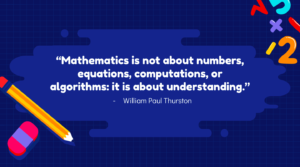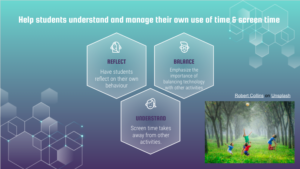A concept map of factors that help teachers effectively respond to students needs:
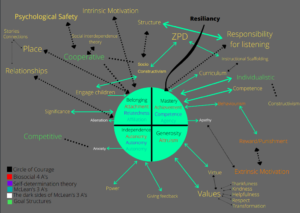
Photo taken from Kathryn Ebert’s and Zoe Jacobson’s ED-D 301 Assignment
In our Learner’s and Learning Environments Course this semester, we had the opportunity to learn about how teachers can effectively respond to students needs. At the centre of this concept map is the Circle of Courage, an Indigenous theory of learning that is holistic and involves four core values that satisfy children’s psychological survival needs. First, students’ need for attachment is nurtured by the spirit of belonging so that students maintain healthy relationships and feel loved. Secondly, the spirit of mastery satisfies students’ need for achievement and thirst for knowledge and success. Thirdly, the need for autonomy is satisfied by the spirit of independence which nurtures students’ desire for responsibility. Finally, the need for altruism is satisfied by the spirit of generosity which encourages students’ concern for others, leading them to feel that they have a purpose in life.
When teaching with the Circle of Courage theory in mind, teachers are providing experiences that lead to student’s self-worth and intrinsic motivation. A sense of belonging leads students to feel significant, mastery leads students to feel competent, independence leads students to feel powerful, and generosity leads students to feel virtuous. The self-determination theory also relates to the Circle of Courage and influences intrinsic motivation, doing an activity because you like doing it, not because of some extrinsic reward or punishment. The self-determination theory takes autonomy, competence and relatedness into account. These are related to the Circle of Courage’s independence, mastery and belonging, but the Circle also takes generosity into account, leading to students’ hearts to be nurtured and cared for.
Indigenous theories of learning are based on the premise that children should be cherished and treated with respect and dignity. Their teachings are interconnected and woven around place, relationships and history. They value thankfulness, kindness, helpfulness, respect and transformation. All of the Circle of Courage domains relate to these Indigenous values as they are all interconnected. The Circle is a resiliency code, so that children can get up when they are knocked down. Indigenous theories promote collectivism rather than individualism, so that children may all lean on and learn from each other.
Alan McLean’s view on motivation and motivational drivers also relate to the Circle of Courage and help teachers respond effectively to students’ needs. He states that internal drive and enthusiasm is fostered by affiliation, agency and autonomy. Affiliation relates to the Circle’s belonging and is driven by teachers engaging with their students by getting to know them and respecting them. Agency relates to the Circle’s mastery as students need self-confidence and efficacy to achieve mastery. This can be driven by structure, moving from rules and authority from the teacher to sharing the responsibility with the student, leading to autonomy. Additionally, curriculum drives stimulation and empowerment, leading to autonomy. Finally, feedback drives autonomy by giving students information that makes them feel powerful and allowing them ownership of their progression.
To achieve learning, teachers can nurture these theories as well as provide students with cooperative and individualistic goal structures, while ensuring psychological safety. Goal structures influence learning outcomes and relate to the interdependence theory, as students are affected by their own and others actions. Cooperative goal structures, students’ achieving a shared goal, promotes the Circle of Courage needs of belonging, mastery and independence. Cooperative goal structures should promote psychological safety, being able to be oneself or speak up with ideas, questions, concerns or mistakes without fear of punishment or humiliation. It is also based on socio-constructivism, as students are actively learning and building knowledge from each other. Additionally, cooperation helps students leave the zone of proximal development and reach mastery by communicating with their peers. Individualistic goal structures, students working by themselves to accomplish their own learning goal, relates to the Circle’s independence and mastery and is important for teacher assessment. Individualistic goal structures also support constructivism because learners are actively constructing their own knowledge. Constructivism is useful as an educator because we can help students relate to topics and increase their intrinsic motivation by accessing their prior knowledge.
A concept map of creating a healthy/unhealthy learning environment:
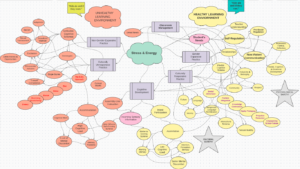
Photo taken from Kathryn Ebert’s ED-D 301 Assignment
First Peoples Principles of Learning
Building off of the Circle of Courage Indigenous theory of learning, I believe that the First Peoples Principles of Learning are extremely important. I think that our Eurowestern culture can learn a lot from Indigenous teachings. At times I become fearful that I will say the wrong thing or offend somebody by not fully understanding Indigenous culture and teachings, but I have come to learn that it is important to try. At EdCamp this year, I joined a room that was talking about how to Indigenize the BC curriculum, and one point that stood out greatly to me was to add a First Peoples Principle of Learning in the same way that you would add a Big Idea from the curriculum, even when you are not asked to. This gets you thinking about teaching in their way. It is also important to seek advice from local Indigenous communities, or a representative in the school you are working at!
“Learning is holistic, reflexive, reflective, experiential, and relational (focused on connectedness, on reciprocal relationships, and a sense of place).”
– First Peoples Principles of Learning
Mindfulness in the Classroom
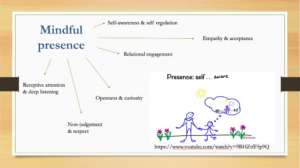
Photo taken from Kathryn Ebert’s EDCI 350 Mindfulness in the Classroom Inquiry Project
The first time I heard about mindfulness in the classroom, I was bewildered. A group of Grade 3 children, who I worked with at an after-school care, were discussing how they loved meditating every morning at school – and that they had the BEST teacher EVER! Personally, I find it difficult to sit still with my thoughts for longer than 10 seconds, so how were a bunch of eight-year-old children capable of this? I had the opportunity to meet with their teacher for unrelated reasons, and she mentioned how at first it was very difficult for her students to adhere to the rules of meditation. However, once they grasped the concept, they looked forward to their quiet time every day.
Mindfulness is the ability to be fully present, to calm your mind and body, to feel your senses, and just “to be”. It helps to build an understanding of your brain and brings awareness to your thought processes.
The fourth teacher education competency, demonstrating an understanding of the complexity of teaching and learning relates to mindfulness because students have a lot going on, other than just school and learning. Learning must also involve learning about your emotions so that children’s minds can be calm and set up for success. It also reminds teachers to be mindful that what works for one student or one class may not work for others. You must be able to evolve and adapt to the needs of students and colleagues.
Incorporating mindfulness into education has shown to improve students’ attention and focus, grades, emotional regulation, school behaviour, empathy, perspective and social skills. Mindfulness strategies can be altered depending on ages and contexts. It may be incorporated throughout the curriculum or only for a few minutes per day. Classrooms may be subtly set up to incorporate mindfulness through small items, such as a quiet-time tent or a Zen garden on the teacher’s desk.
I’ve also done research on yoga and mindfulness in the classroom. Yoga is a great way to get students active and to help them connect their mind to their body. It can help students to identify and understand their emotions and how they react to them. Here is a collection of resources that I have made about yoga and for incorporating yoga into the classroom:
My EDCI 336 Free Inquiry on Yoga
Mathematics
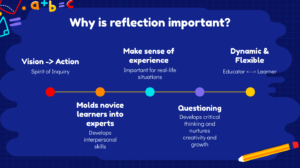
Photo taken from Kathryn Ebert’s EDCI 300 Newsletter Assignment
Our mathematics class this semester has not been a typical math class. Instead of focusing on just the cognitive aspect of mathematical thinking, we explored the importance of the affective such as emotion and imagination. Math, and other areas of school, should be about understanding, fluency, problem-solving and reasoning. Fostering these areas of mathematics has relieved my anxiety around math, and I am excited to do the same for my future students!
Presentation on the Effects of Screen Time on Children
I completed an inquiry project on the effects that screen time has on children in our EDCI 336 class. When it comes to screen time, teachers should not just tell students to limit their screen time, but should help them understand and manage their own use of time, including screen time. This way of thinking really stuck with me, as it promotes intrinsic motivation and independence. Teachers can have students reflect on their own behaviours through a values based model. Teachers should help students understand the importance of balancing technology with other activities such as playing, reading, socializing with others or using their imagination. Children must understand that when they are spending time on screens, it is taking away from activities such as sleeping, eating and social skills. While this is specifically about screen time, I think that this way of using a values based model can translate to many other areas of learning. When children are told what to do, they may not understand why. Explaining to children the consequences of their actions will help them to make good choices for themselves as they grow older and become more independent.
Yoga Unit Plan
This yoga unit focuses on providing tools for students to understand and regulate their emotions. Not all parts of the lesson are pictured here.
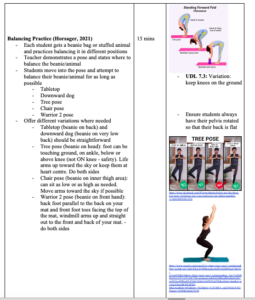
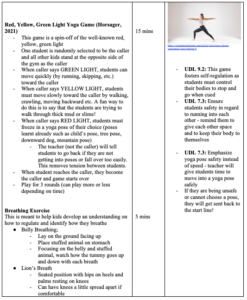
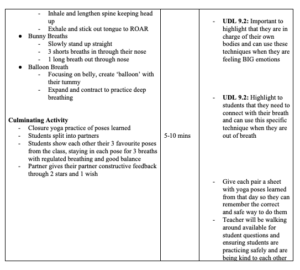

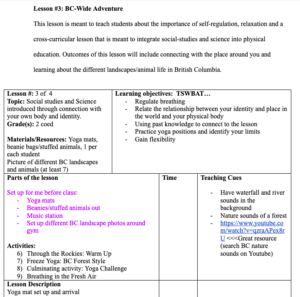
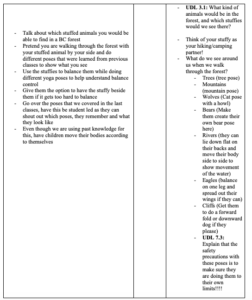


Photos taken from EPHE 311 Yoga Unit Plan Assignment by Kathryn Ebert and Anna Serdyukova
Softball Warm-Up Game
I created this softball warm-up game in the beginning of last semester. It is a fun and engaging way to get students moving!
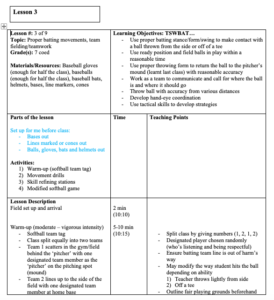
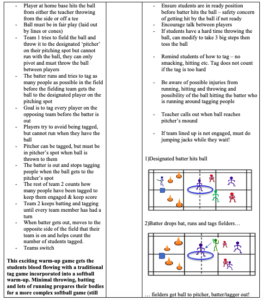
Photo taken from Kathryn Ebert’s EPHE 310 Assignment
Abstraction Art Lesson Plan
This art lesson plan promotes exploration of students identity and emotions.
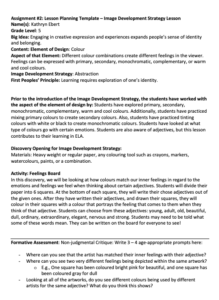

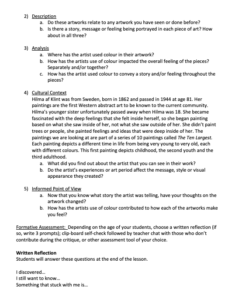
Photo taken from Kathryn Ebert’s EDCI 307A Assignment

